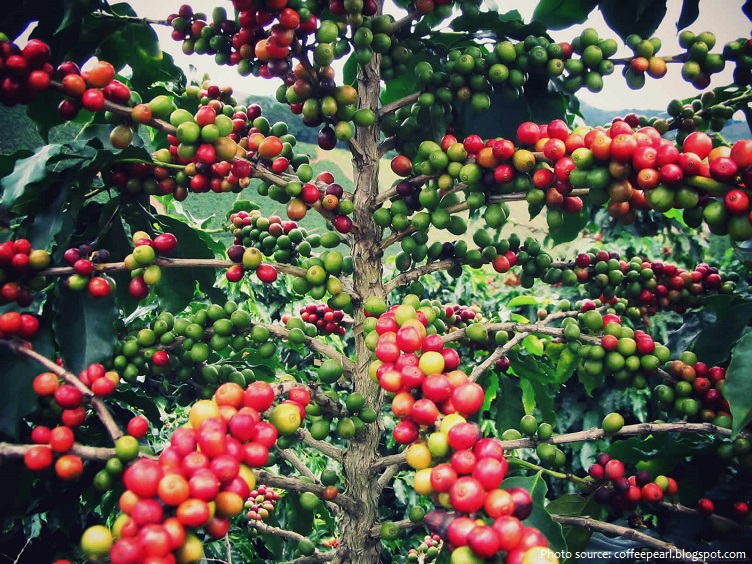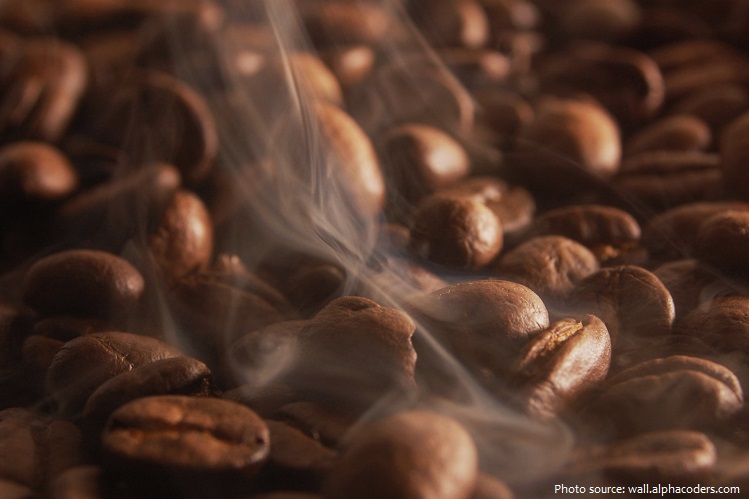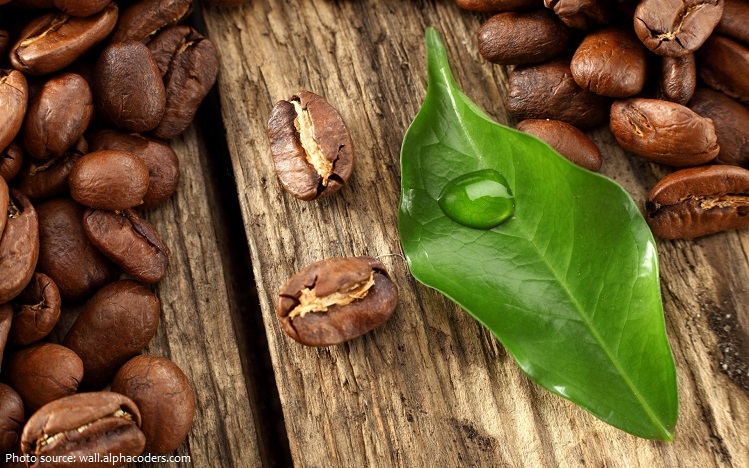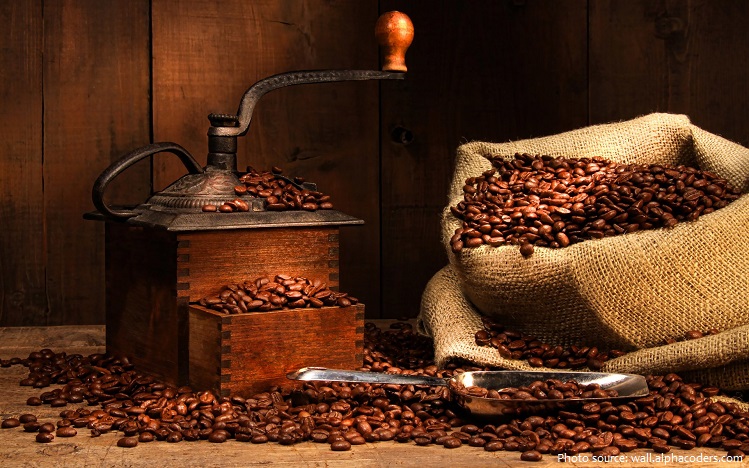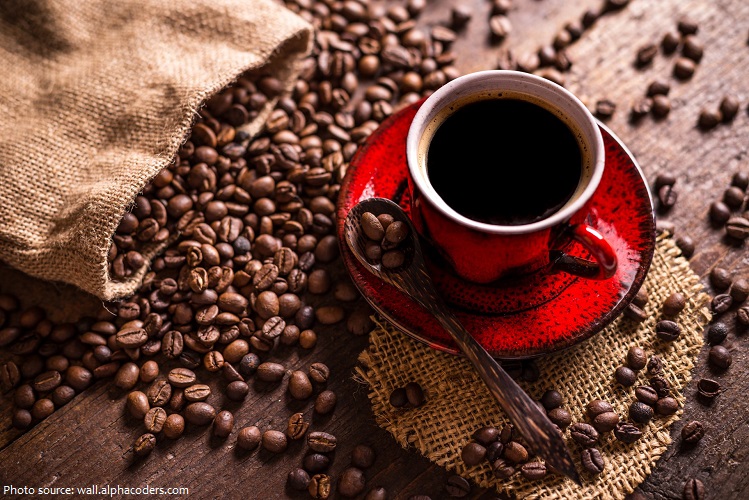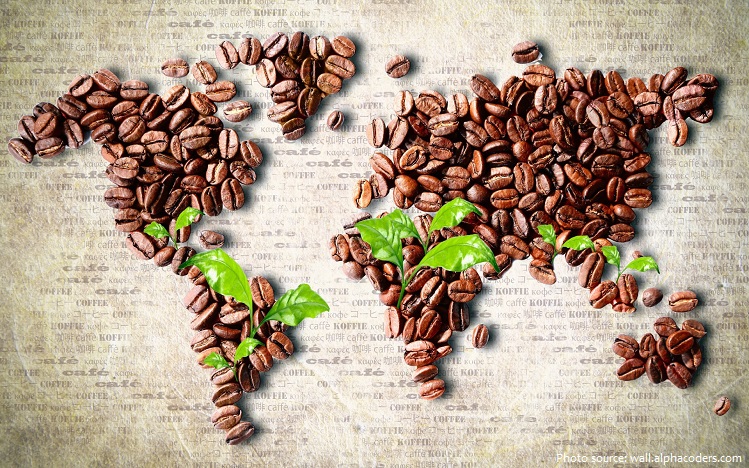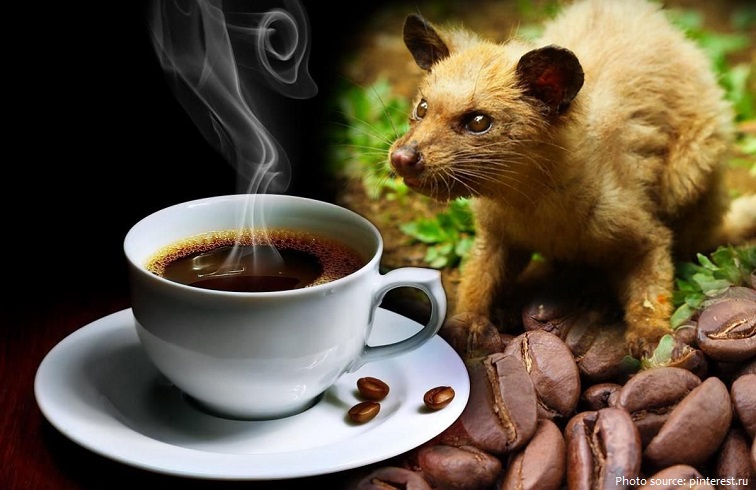Coffee is a brewed drink prepared from the roasted seeds of the coffee plant.
It is one of the three most-popular beverages in the world (alongside water and tea).
Coffee is the second most traded commodity on earth. Crude oil (unrefined petroleum) is the first.
Its popularity is mainly attributed to its invigorating effect, which is produced by caffeine, an alkaloid present in coffee.
The world consumes over 2.25 billion cups of coffee every day.
Coffee berries [photo below] and their seeds undergo several processes before they become the familiar roasted coffee. First, the beans are picked by hand. Then, the beans are processed by disengaging the coffee seeds from their coverings and from the pulp and by drying the seeds from an original moisture; all beans must be removed from their fruit and dried before roasting.
There are two types of coffee beans: Arabica and Robusta. Seventy percent of the world consumes Arabica coffee, which is mild and aromatic. The remaining drinks Robusta, which is more bitter-tasting but has twice as much caffeine.
In the past, people gave names to new Arabica coffees from the port they came from. The two oldest Arabica coffees are “Mocha” and “Java”. Today, names are more specific. They tell us the country, region, and sometimes even the property where they come from.
There are several legendary accounts of the origin of the drink itself.
One legend involves a 9th-century Ethiopian goat-herder, Kaldi, who, noticing the energizing effects when his flock nibbled on the bright red berries of a certain bush, chewed on the fruit himself. His exhilaration prompted him to bring the berries to a monk in a nearby monastery. But the monk disapproved of their use and threw them into the fire, from which an enticing aroma billowed, causing other monks to come and investigate. The roasted beans were quickly raked from the embers, ground up, and dissolved in hot water, yielding the world’s first cup of coffee.
The other legend involves the Moroccan Sufi mystic Ghothul Akbar Nooruddin Abu al-Hasan al-Shadhili. When traveling in Ethiopia, the legend goes, he observed birds of unusual vitality, and, upon trying the berries that the birds had been eating, experienced the same vitality.
The earliest credible evidence of either coffee drinking or knowledge of the coffee tree appears in the late 15th century, by Sufi Imam Muhammad Ibn Said Al Dhabhani who is known to have imported goods from Ethiopia to Yemen.
By the 16th century, coffee start to spread – it had reached the rest of the Middle East, South India (Karnataka), Persia, Turkey, the Horn of Africa, and northern Africa. Coffee then spread to the Balkans, Italy, and to the rest of Europe, as well as Southeast Asia and then to America, despite bans imposed during the 15th century by religious leaders in Mecca and Cairo, and later by the Catholic Church.
The world’s first coffeehouse (coffee shop), Kiva Han, opened in Constantinople (modern Istanbul) in 1475; during the 17th century cafés opened in Italy, France, Germany, and England.
By 1663 there were 82 coffeehouses in London; 40 years later there were more than 500.
The earliest coffee mill was invented by Nicholas Book, an Englishman, in the latter part of the 17th century.
Coffee wasn’t really popular in America until the Boston Tea Party of 1773, when making the switch from tea to coffee became something of a patriotic duty. The Civil War and other conflicts that followed also helped to increase coffee consumption, as soldiers relied on the caffeine for a boost of energy.
By the late 1800s, coffee had become a worldwide commodity, and entrepreneurs began looking for new ways to profit from the popular beverage.
Like many great inventions, espresso was born out of necessity. Its inventor simply wanted to have his coffee faster and went about finding a way to quicken the brewing process. The first machine for making espresso was built and patented in 1884 by Angelo Moriondo of Turin, Italy.
In the 1960s, a certain awareness for specialty coffee started to grow, inspiring the opening of the first Starbucks in Seattle in 1971.
Today, Brazil is the leading grower of coffee beans, producing one-third of the world total.
The seeds coffee plant are almost always called coffee beans, even though they are technically not beans. In fact, though beans are always seeds, seeds are not always beans. A bean is just one kind of a seed. Specifically, it is a name for seeds of the family Fabaceae (also known as Leguminosae) of which the coffee plant is not a member; thus, coffee “beans” are not actually beans.
Kopi luwak is the world’s most expensive coffee. Price is from $100 to $600 for 450 grams (1 pound). The main factor of it’s high price is the uncommon method of producing such a coffee. It has been produced from the coffee beans which have been digested by a certain Indonesian cat-like animal called civet or civet cat. As a result, kopi luwak coffee is also known as civet coffee.
The second most expensive coffee in the world is Black Ivory Coffee. Price is $500 for 450 grams (1 pound) and is produced in Thailand. Similar to kopi luwak coffee, it is prepared by elephants that consume the Arabica coffee beans and process them during digestion. Their stomach acid breaks down the bean proteins and provides a characteristic robust flavor to the drink. This coffee is rare and expensive because only a small amount of beans are available at any time.
Also the second most expensive coffee in the world is Finca El Injerto Coffee. Price is also $500 for 450 grams (1 pound) and is produced in Guatemala. It is made from rare, rich and small beans, which is the main reason for its high price tag. The grains are washed in a single channel and are broken twice, which improves their quality.
The word “coffee” entered the English language in 1582 via the Dutch koffie, borrowed from the Ottoman Turkish kahve, in turn borrowed from the Arabic qahwah.
The expression “coffee break” was first attested in 1952.
New Yorkers are said to drink 7 times the amount of any other US city.
Voltaire is said to have drunk 40-50 cups of coffee a day. Voltaire, the famous satirist who wrote “Candide,” is perhaps one of the most avid coffee addicts in history.
Ludwig Van Beethoven took his coffee with exactly 60 beans per cup. He was obsessive about his coffee, and would count by hand 60 beans per cup, according to his biographer.
In the United States, September 29 is celebrated as National Coffee Day.


